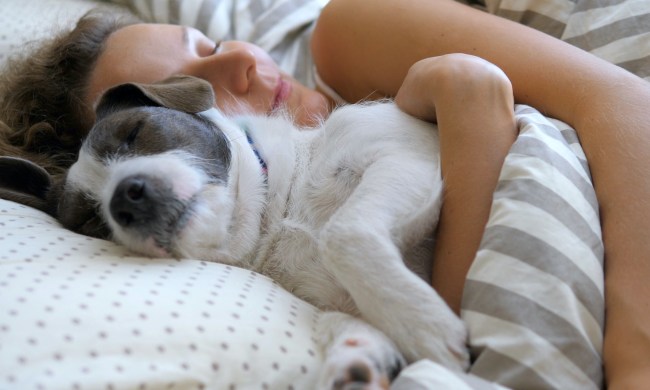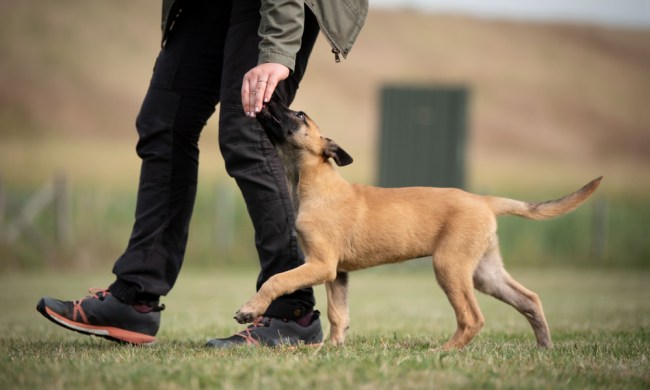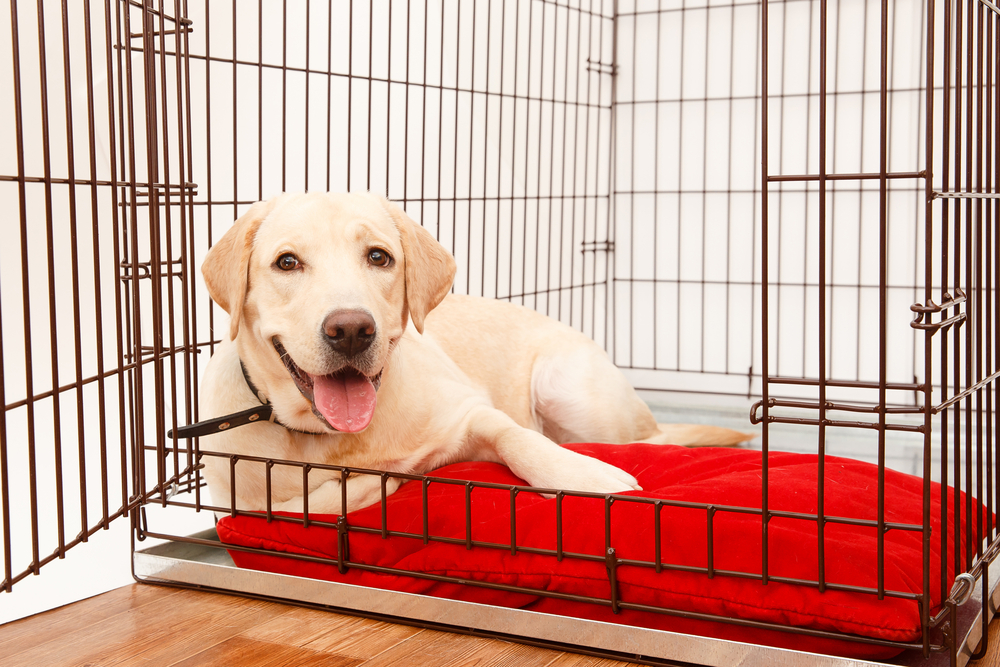
As pet parents, we’d like to think that we have every solution for behavior issues, like how to stop a dog from peeing in his crate. Your buddy can’t exactly tell you why he pees in the crate when you’re not home, though, and you can’t always catch him in the act — so it can be tricky.
Luckily, with a keen eye and a few trial runs, you’ll figure out the problem in no time. You can always enlist your family, vet, or local doggie daycare to keep an eye out, too, but it’s up to you to make the necessary changes to change the behavior. Anything from a more consistent routine to a new treat-dispensing toy could be the difference between cleaning up a puddle or coming home to a happy pup.
Here’s how to stop your dog from peeing in his crate.
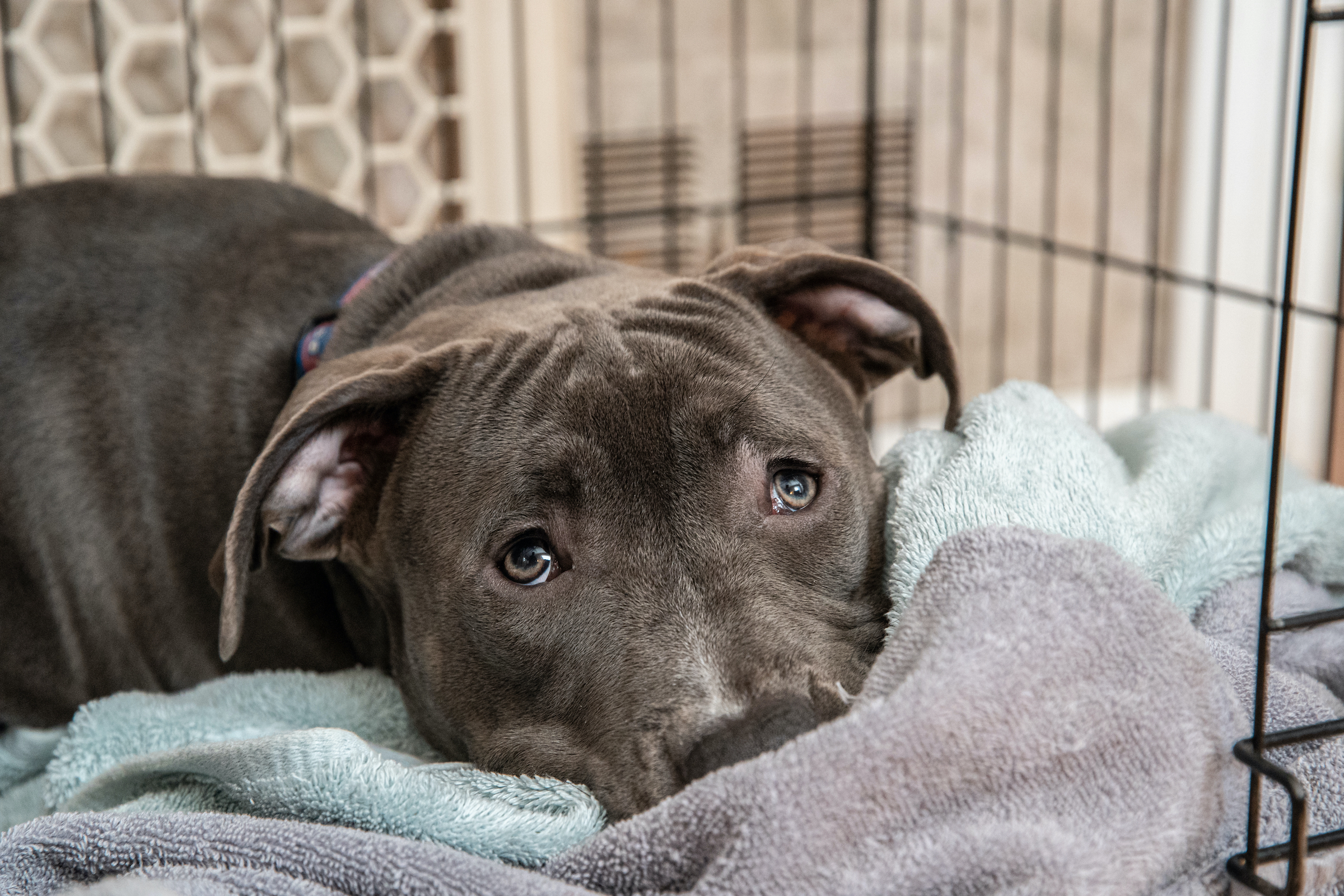
First, rule out medical issues as a cause for crate incontinence
Before anything else, it’s important to make sure your fur baby is in good health, so you should book a visit to your vet. Many medical issues could cause a dog to lose control of their bladder, not all of which are obvious or even noticeable. Dogs are notorious for hiding their discomfort, after all.
A few reasons your dog might not be able to hold it include:
- Urinary tract disorders, including urinary tract infections, prostate diseases, etc.
- Neurological issues, including spinal injury and nerve damage
- Bladder storage issues
- Urine retention due to stress, pain, etc.
- Bladder or vestibular tumors
A more complete list can be found on the website of the Veterinary Centers of America.
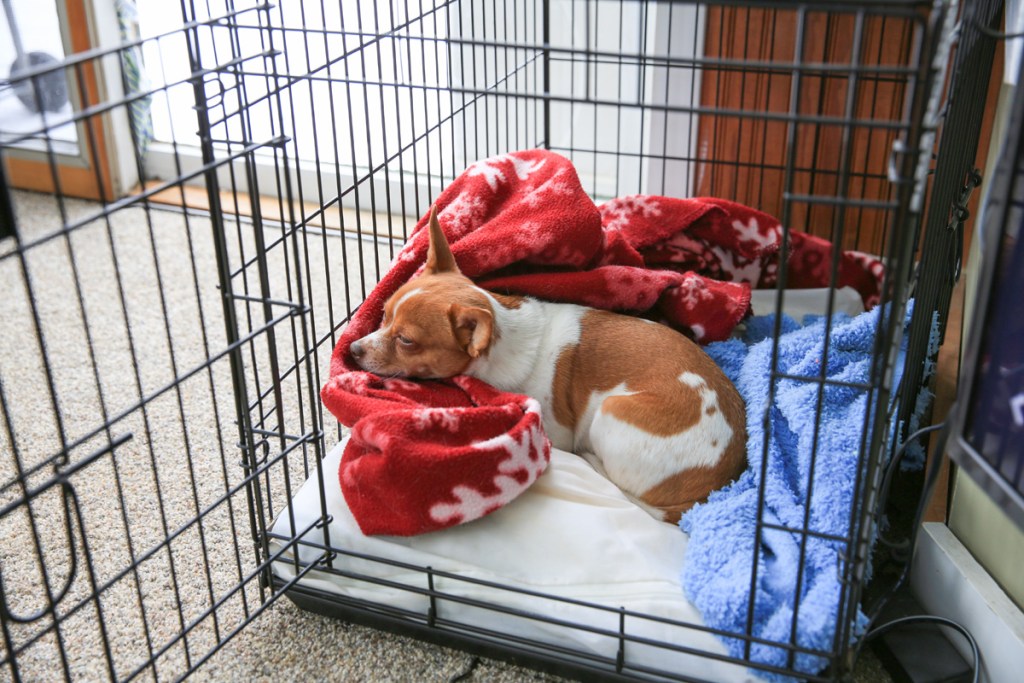
Make sure the crate is the right size for your dog’s measurements
If your dog’s crate is too big, he’ll have plenty of room to relieve himself in a corner away from where he sleeps. Living like this, when there’s no consequence to peeing in the crate, he has no reason not to do it. When your pup has to lie in his urine, however, he’s likely to think twice about where he goes.
If you have a crate that your dog is still growing into, you can purchase a crate divider panel to make the space a little smaller.
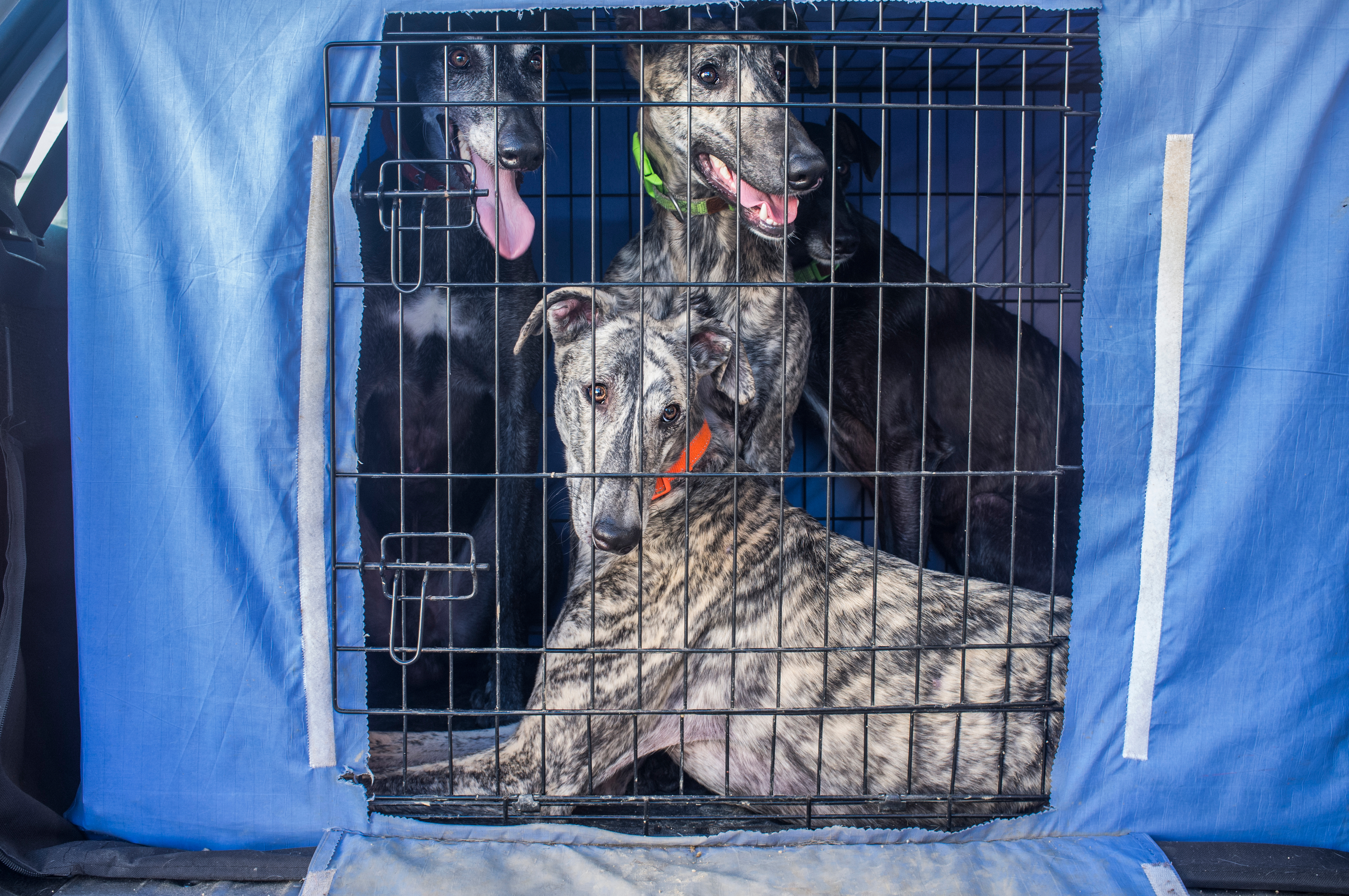
Keeping your pup on a routine can prevent him from peeing in his crate
Dogs thrive on routine, so taking them out to use the bathroom at the same times every day will be especially easy for them to get used to. It will reduce their anxiety since they’ll know exactly when they’ll get to go outside, and they won’t stress that they’ll have to go too long without relief.
For a schedule to truly help your dog, you need to understand how long he can comfortably control his bladder. This time will vary from dog to dog — breed, age, and health are just a few of the factors that affect this. Dogs should be taken out for a potty break three to five times a day on average, though this number is likely to go up for smaller dogs, puppies, and seniors.
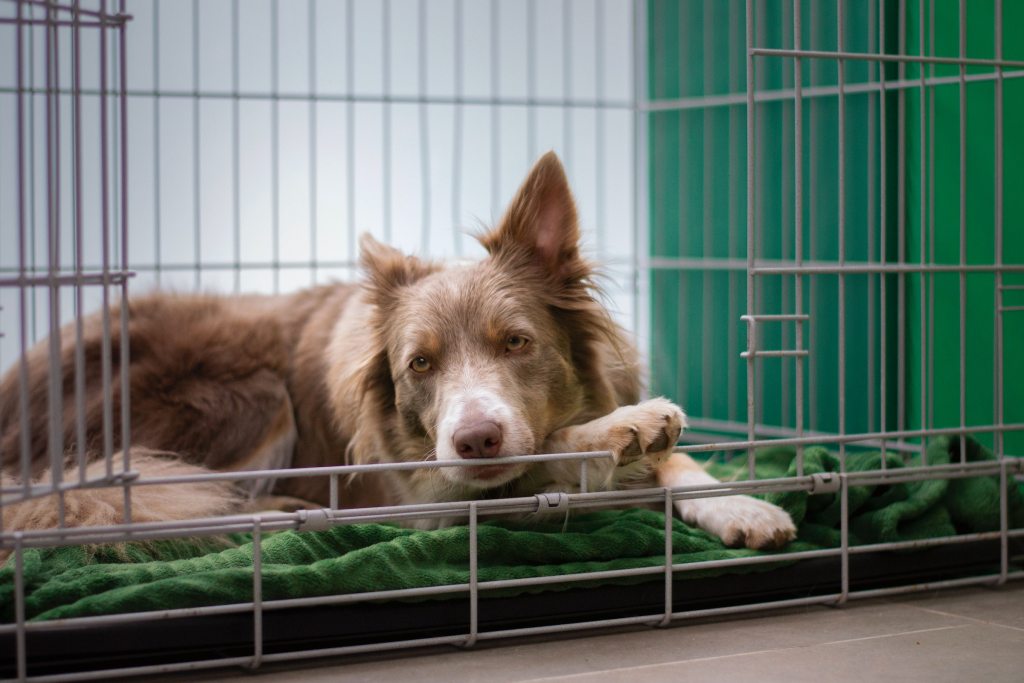
Use positive association to help with your dog’s separation anxiety concerns
Many dogs urinate in the house or their crate because of an unresolved emotional issue. Separation anxiety is common in pups with a history of abuse, though any dog can become anxious when left alone. If your dog urinates in front of you, however, you can likely rule this out.
To ease separation anxiety, help your dog learn to enjoy being in his crate (via ASPCA). You can make his crate more comfortable by tossing in a favorite toy, a fluffy bed, or even a shirt that smells like you. Give your buddy a treat every time you leave the house, so he’ll make a positive association between the treat and your departure. Better yet, fill up a treat-releasing toy for a long-lasting distraction.
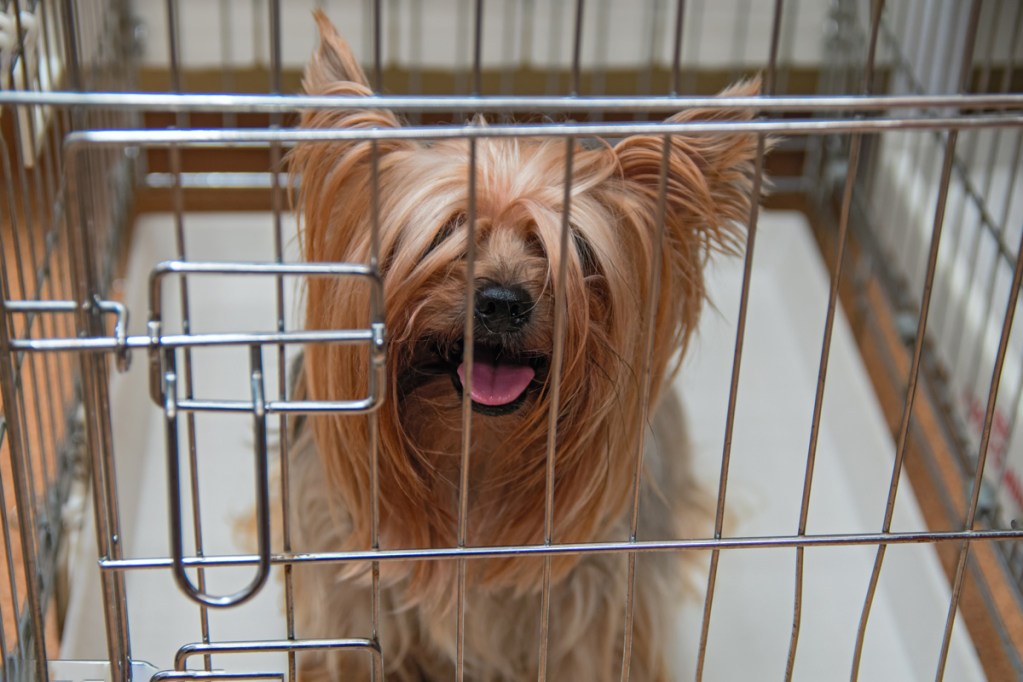
Will dogs pee in their crate at night?
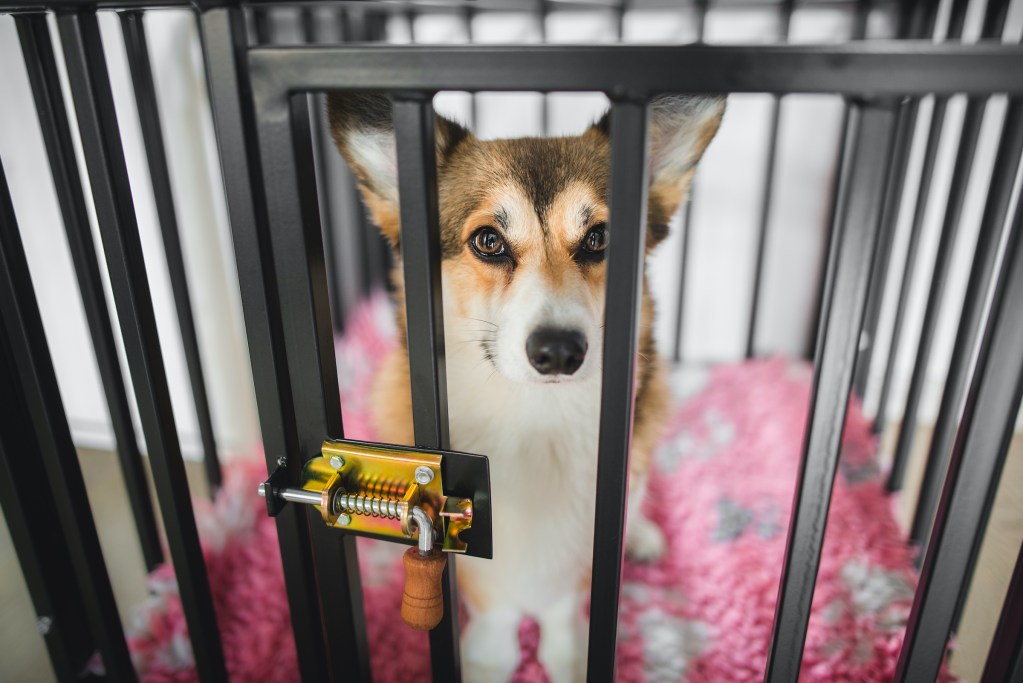
Rethink your expectations as you go through the process
Is your dog truly ready to be left alone in his crate for long periods? If you have a particularly young puppy at home, he might need a while longer to grow and keep house training before he is continually successful. To determine how long your puppy can hold his urine (on average), add 1 to the number of months in his age — this is how many hours you should expect him to be in control of his bladder. Of course, this can’t be guaranteed for every pup, but it’s a helpful rule of thumb.
Some dogs need more time to get used to their crate, while others need to be house-trained more thoroughly. Take the time to get to know your pup, and you’ll have a better idea of what to expect in the future. Good things take time!
As frustrating as a mess in the crate can be, it’s not a permanent issue. Once you can find the reasons behind your dog’s incontinence, you can work with him to make some changes and solve the issue. When in doubt, your trusted vet will have many ideas and resources to help you get started. Pee-free crate time will be so much nicer for everyone, so why not begin now?

